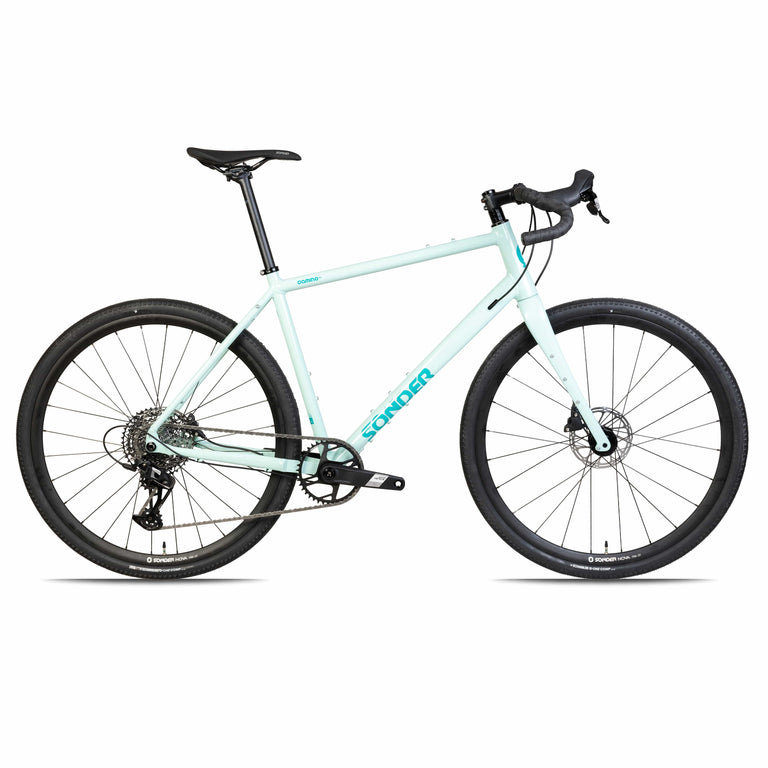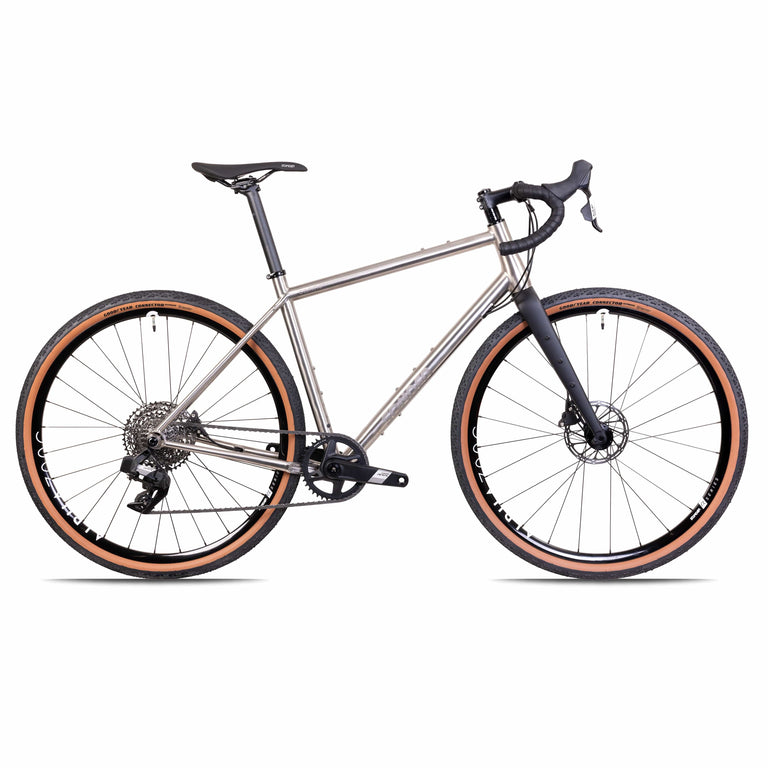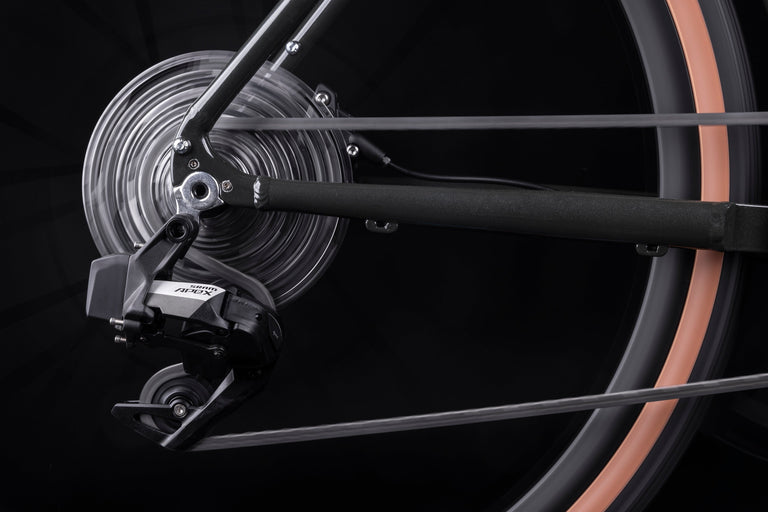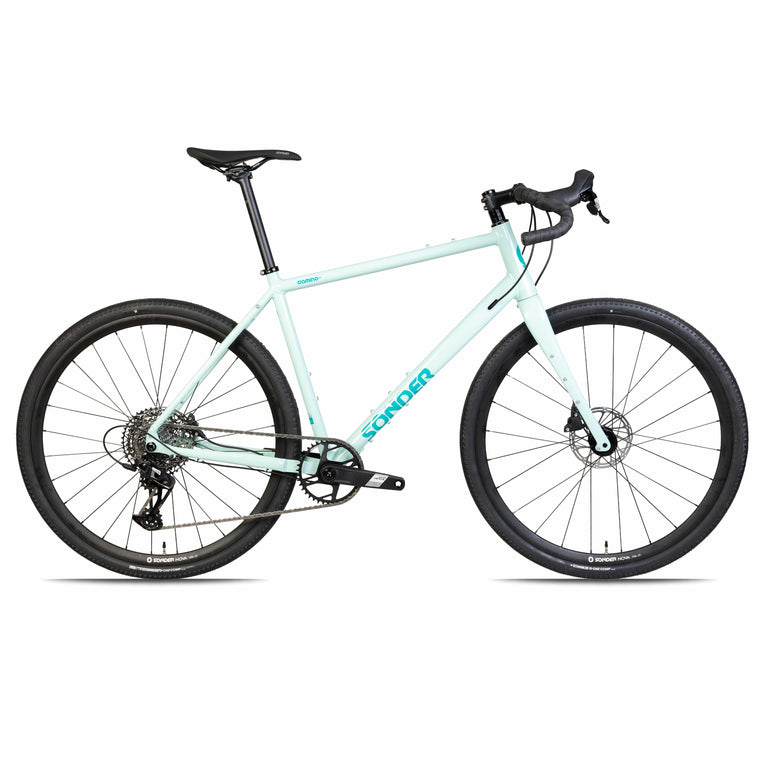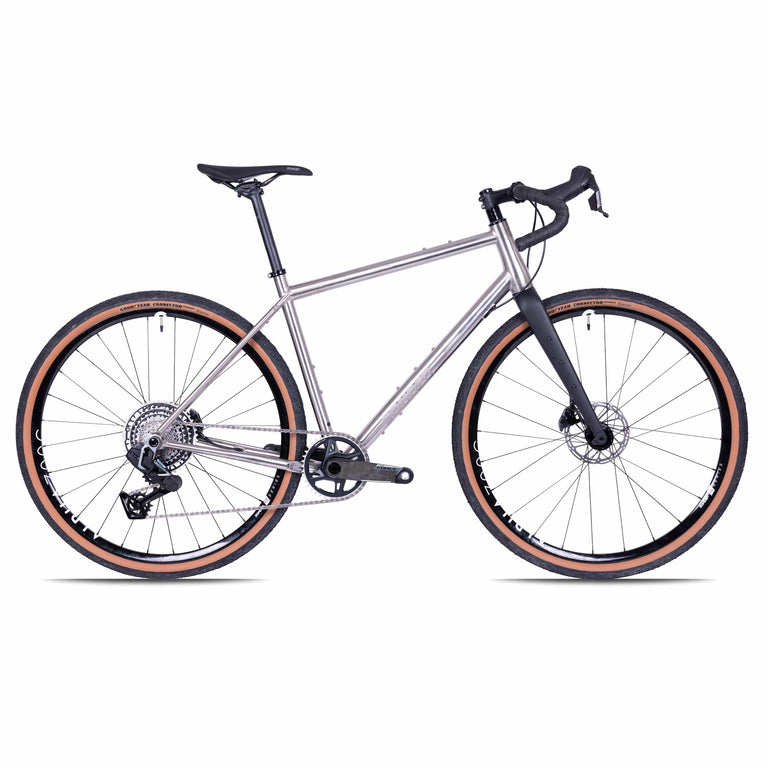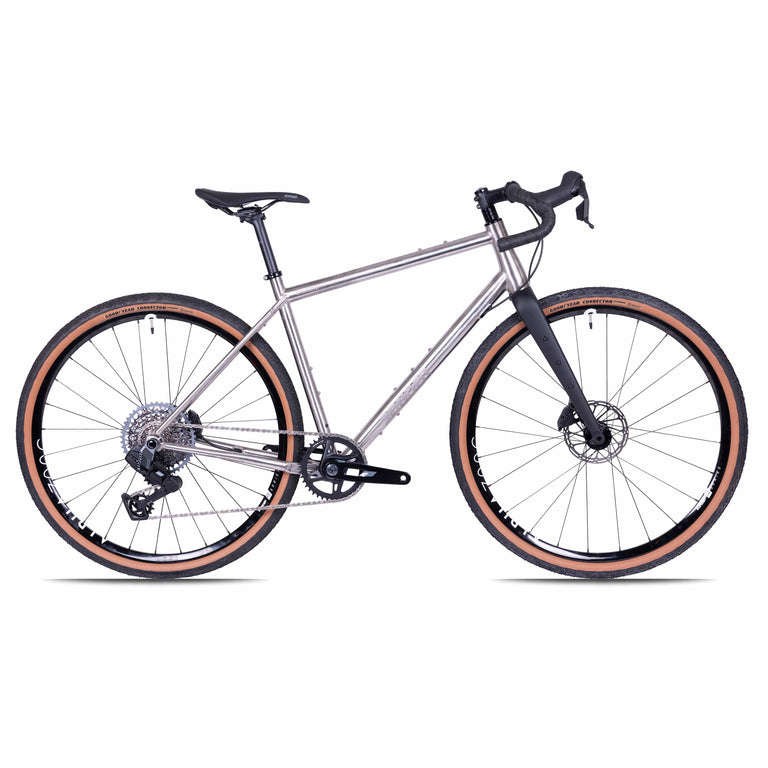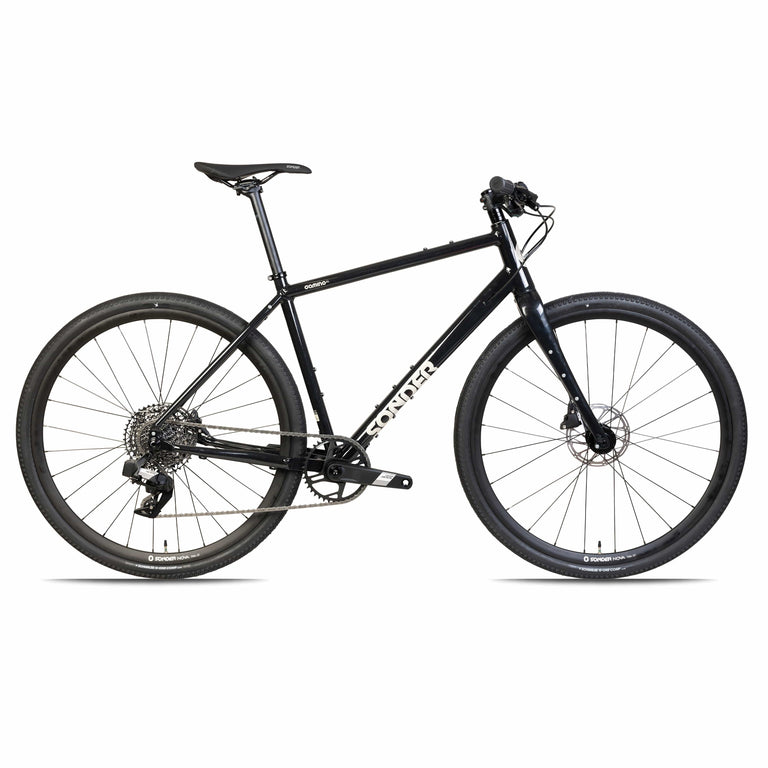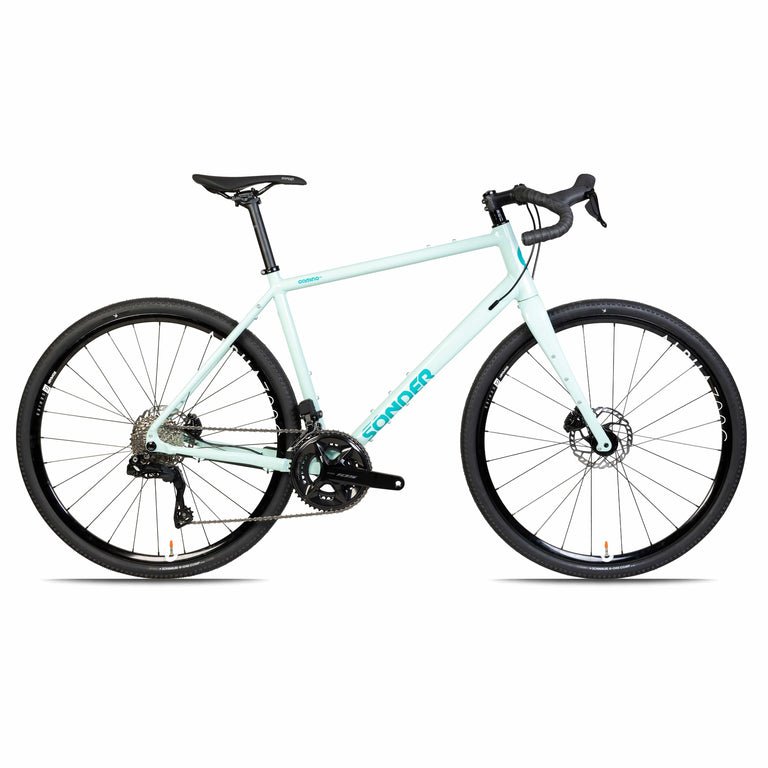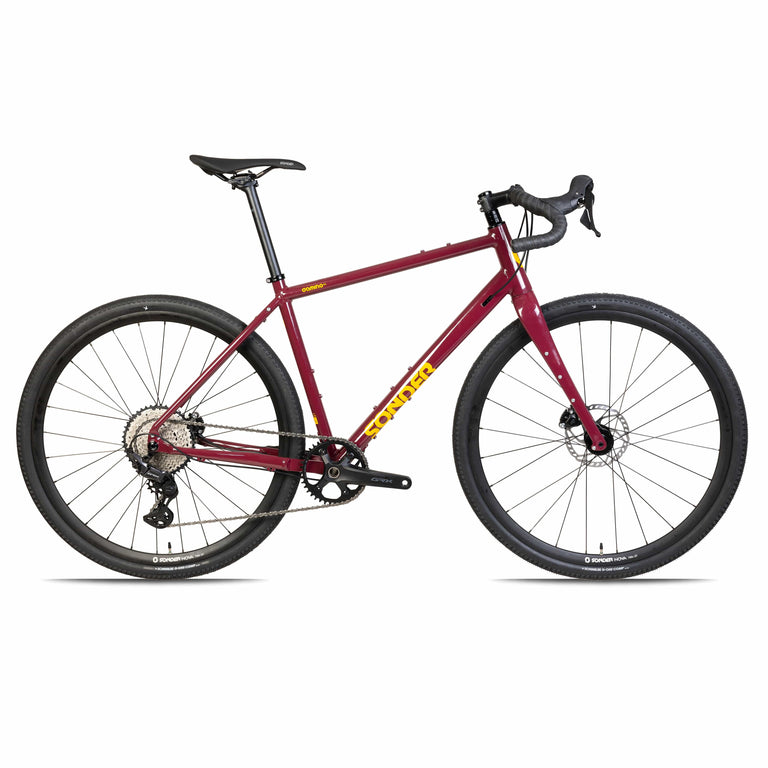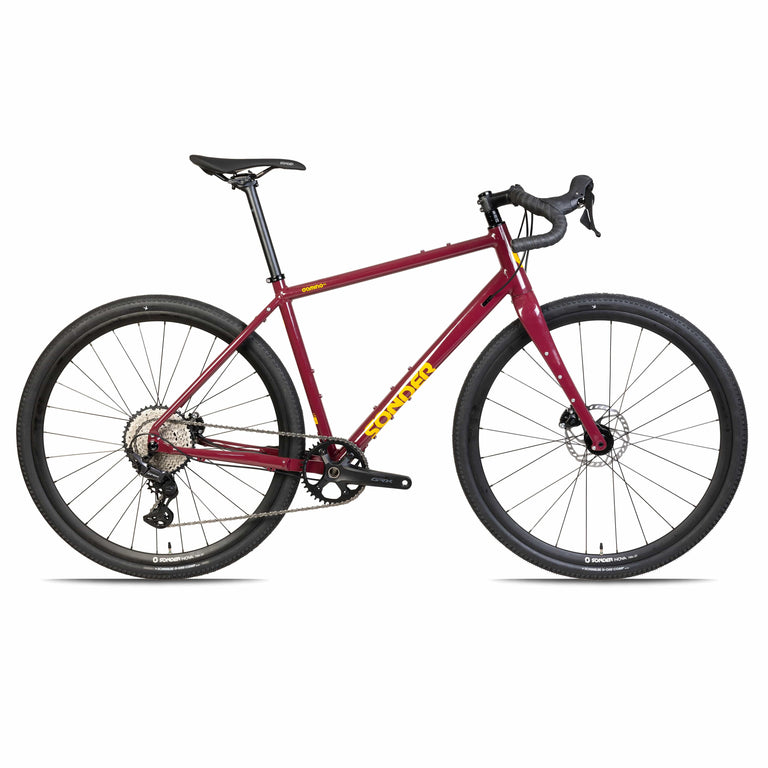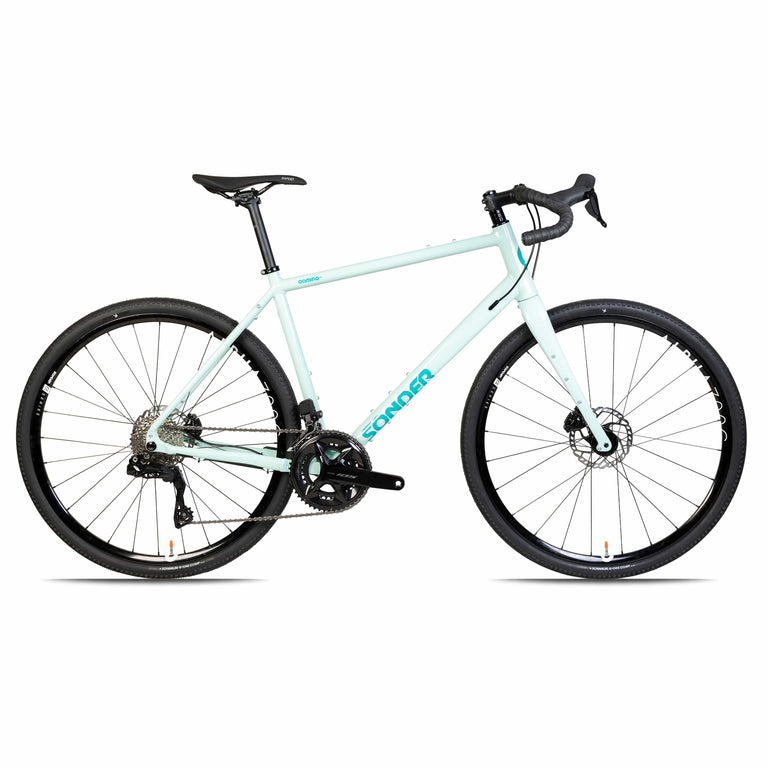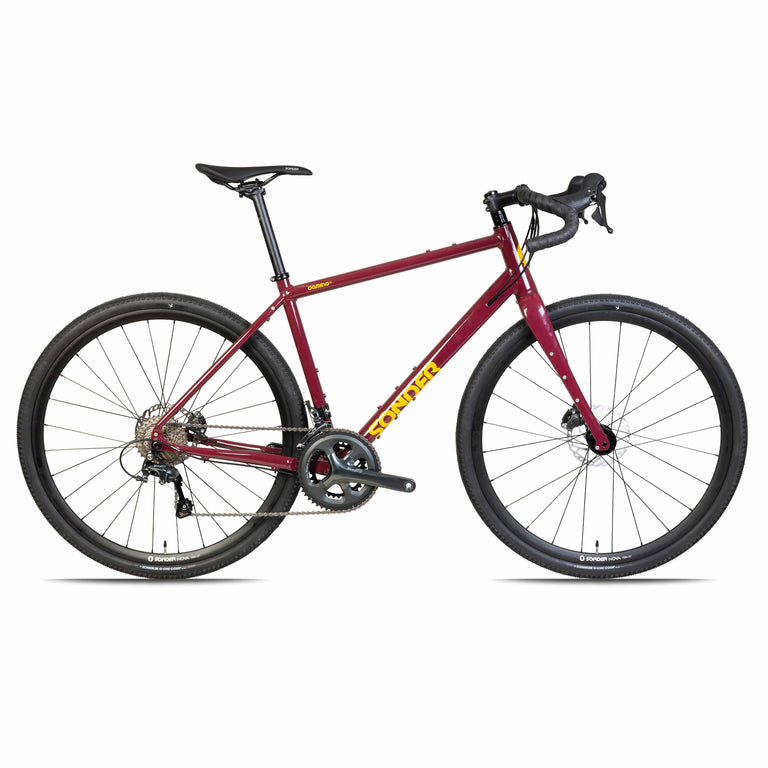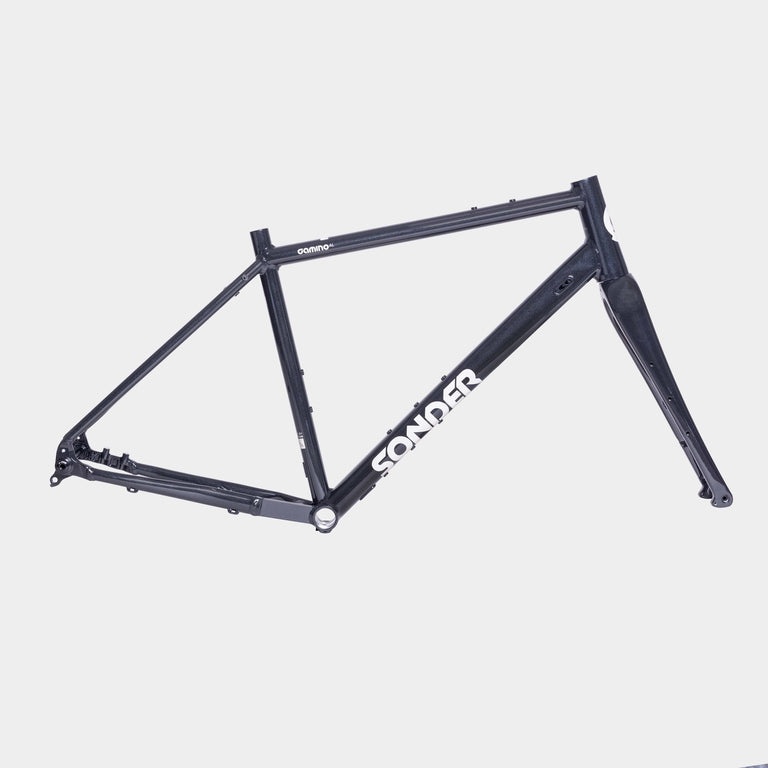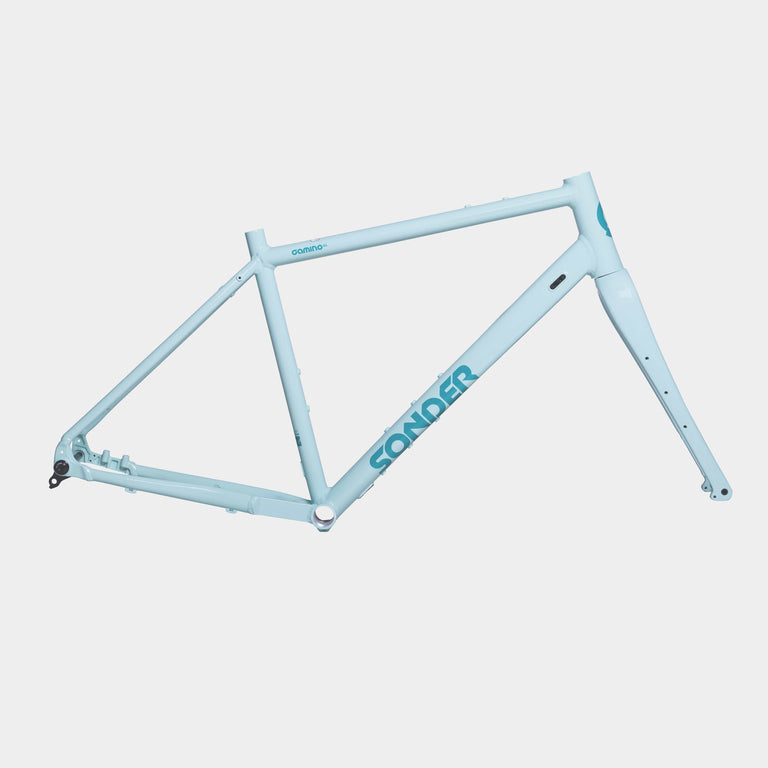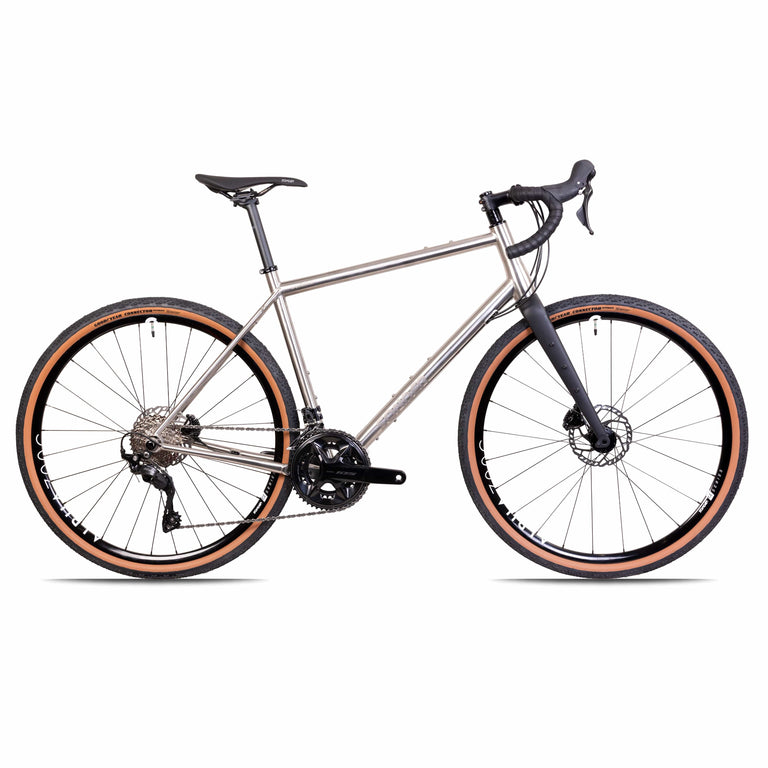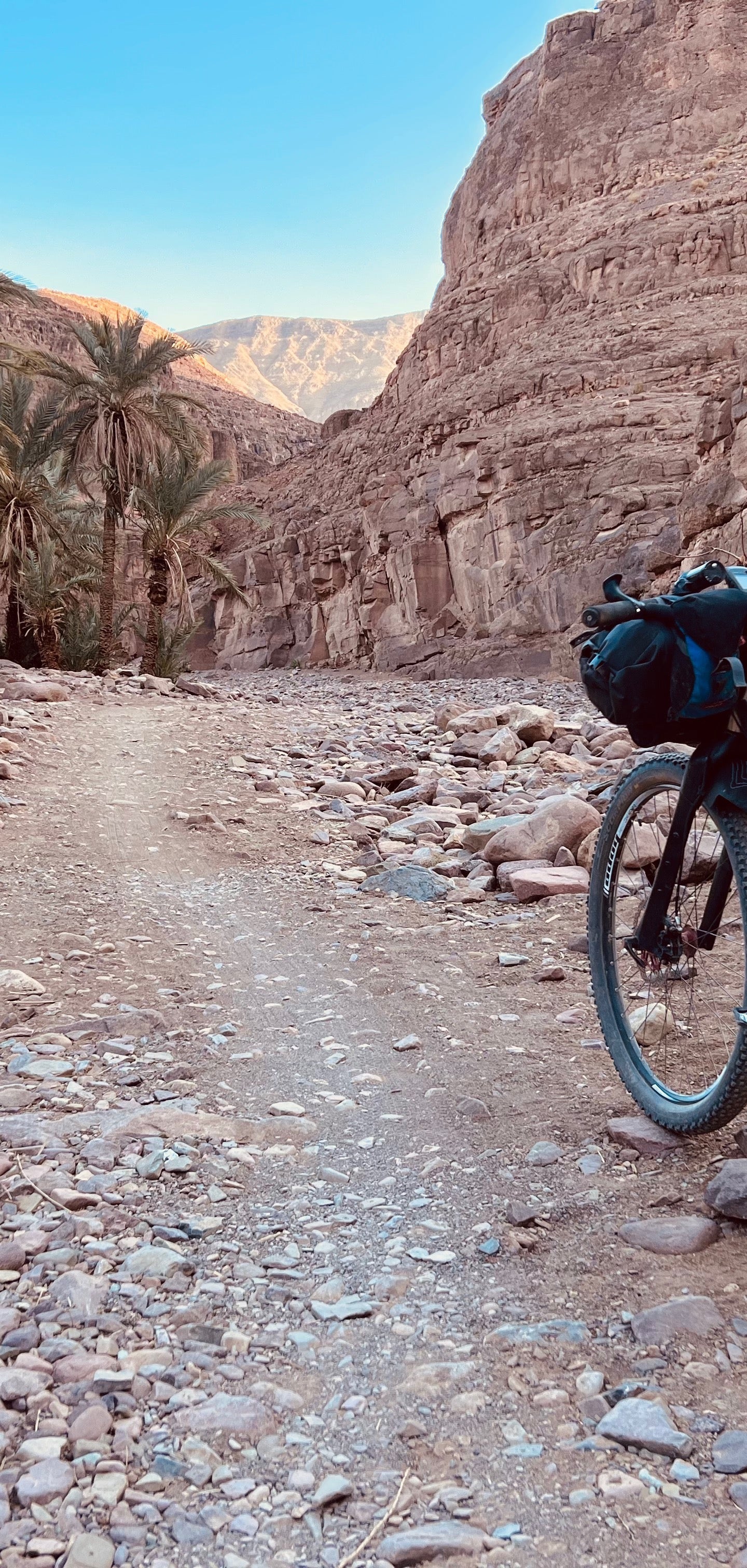
Sonder rider Stu Taylor recounts the Atlas Mountain Race with clarity, grit, and insight. A story of navigating rugged paths and finding solace in challenges.
We have all faffed over kit choices, even if it is just an overnight bivvy - but what does it take to plan and execute a remote, multi-day, bikepacking race 1000's miles from home?
Sonder rider Stu Taylor recently completed the Atlas Mountain Race in Morocco. It's no ride in the park. In this video Stu reflects on the experience, and runs us through his bikepacking rig and shares his kit list for the adventure.
Is it faff on steroids, or is it controlled and methodical?
Multi-day epic rides are uncertain. Things can go wrong and do go wrong. Stu has learned this the hard way. In 2020 he pulled out due to 8 broken spokes. In 2023 he faced a new challenge, solved it with some creative in-the-box thinking and carried on to finish. Watch the video to find out about that- let's geek out on the kit list.
What is the Atlas Mountain Race?
The Atlas Mountain Race is a 1366km fixed route self-supported bikepacking race with 22000m of climbing throughout the route. It's held in February and starts with a roll out from Marrakesh. It crosses the Atlas mountains and goes on to Essaouria.
What's the best bike for a multi-day mountain bike race?
The titanium Sonder Broken Road was the ideal weapon of choice for Stu. It's a hard tail 29er made from aeronautical grade titanium, chosen for its durability and compliance, it isolates the rider from shock and fatigue on long rides like the Atlas Mountain Race.
The long wheelbase combines precision and control, with the flexibility to adjust riding position easily and maximise in frame storage potential.
Designed with a relaxed head angle, the frame creates the perfect set up for eating up the miles over any surface, and strikes the balance Stu needed between comfortable uphill grinding and hair-raising downhill whooping.
Who says multi-day rides need to be boring?
Weight was kept low with carbon forks and a Jones loop bar for extra cushioning on the front end. The multiple grip positions relieved wrist pains and the loop offered options for luggage attachment points, freeing up the bars for hands.
The inner bar ends were a new addition to Stu's set up and offered yet more hand positions to relieve strain and provide torque on the climbs.
29" is Stu's wheelset of choice, and a common spec that would make it more likely he could find spares if needed. Fast rolling and tubeless, it ate up the 150 - 200 km / day with the SRAM Eagle 12 speed drive train and 30t front ring providing the optimum selection of gears for the varied terrain.
Bikepacking rig
Racing, self-supported and alone in mountain terrain Stu needed to be sure his kit stayed clean and dry. He opted for the Alpkit Deluge range of waterproof bikepacking bags. Admittedly heavier than our UK made luggage the welded seams and water resistant zips gave Stu the extra reassurance he needed.
His bikepacking rig was built around a now classic distribution of luggage zones around his bike:
Handlebar bag
This contained Stu's sleep system. The form factor of the roll top dry bag is perfect for the shape of a sleeping mat, sleeping bag and bivvy. The advantage of having it all in one bag is that it all comes off in one go at the end of the day. Everything is in one place, self-contained and oh so simple.
Stem Cells
On-the-go accessibility for items Stu needed quick access to - sunglasses, suncream, snacks - anything he needed for the challenges of the specific day. With one Stem Cell either side of the stem Stu optimised his storage without effecting balance or restricting movement of his knees when climbing.
Fuel Pod
An additional easy access Top Tube bag for phone, food etc sitting discretely on top of the top tube. Enough said.
Frame Bag
Sitting within the frame triangle a waterproof frame bag will maximise the storage potential of any bike. With its adventure bike geometry the Broken Road swallows kit and keeps the centre of gravity low for better bike handling. Stu was carrying water in a hydration pack so had the full frame triangle for the extras that he didn't really need to access quickly.
Saddle Bag
Tucked under the saddle were Stu's spare clothes, warm gloves. Kit that is lightweight, compressible and that he didn't need to access frequently. Of all the types of bike luggage the saddle bag is the one where its balance is most affected by tweaks to its setup. Once you have the perfect set up, you don't want to be taking things in and out and affecting its balance.
Never pack your fears. if you pack your fears you end up packing really heavy. - Stu Taylor
Clothing
On an epic ride like this, choice of clothing is as important as what you ride. Get it right and you will have the confidence to keep riding through whatever conditions you encounter.
Stu epitomises our approach to layering. The bedrock underpinning his system was the merino wool base layer. This is really one of those always on garments. On top of this Stu wore a Rhythm cycling jersey and Morphosis vest. This gave him great wind protection without sacrificing breathability.
Stu's Heiko Primaloft synthetic jacket was a surprise winner. Packed to stay warm during the night if the temperatures plummeted, Stu found himself wearing it more than expected.
The Gravitas waterproof was a no brainer - weighing no more than a bag of peanuts and packable into a Stem Cell, Stu wore it over everything on the day it rained.
Thanks to Stu's layering approach he could adapt to the changeable conditions and keep on riding.
Camping
No one can ride 7 days straight, and credit card bike touring isn't going to get you very far in the Anti-Atlas Mountains. Bivvy (or camping) gear can make or break a multi-day trip. As one of the heaviest category of items on your bike you are going to want to pair it down as much as possible. A lighter bike is a funner bike to ride and a more bearable bike to hike-a-bike.
But skimping here might mean that you don't get the rest and recuperation you need to keep going over several days.
Stu went with the Elan hooped bivvy, CloudBase sleeping mat and PipeDream 400 goose down sleeping bag.
This was a compact, and discrete set up which gave him the option to catch his zzz's just about anywhere along the route.
Compared to other sleeping mats the CloudBase requires minimal puff to inflate, not to be underrated at the end of a big day.
Finally if there was ever a classic sleeping bag for -5C conditions, it has to be the PipeDream 400! With a small pack size, low weight and now with responsibly sourced hydrophobic down, it is better than it ever has been.
Electronics
Our devices are playing an increasingly common part in our everyday adventures. They have many advantages, especially around safety but the one thing you cannot get around is that they need power. I was interested to see Stu didn't go with a Juice dynamo hub for on-the-go charging. He found that a power pack, along with AA lithium batteries provided the solution he needed for keeping his phone, Garmin Etrex and SPOT tracker running.

Repairs and accessories
How many spare spokes in enough spare spokes? - Turns out 8 is the magic number in Stu's case. Having retired from a previous attempt due to a mechanical that would have tested even MacGyver, I was keen to find out if he had changed his approach to what he carried, and where if anywhere, his thought he Achilles heal may lay.
'Never pack your fears' was Stu's response, meaning if you try and pack for every eventuality you are not going to get off the starting line.
Stu also carried a water filter and tablets during the ride for piece of mind. Sometimes it is the little things like this that are overlooked and give you the best chance of finishing.
Can you fit all of this on a bike and race?
Absolutely! Sure you could trim it down here and there - but at what cost? This is a self-supported event. When things go wrong you have to get yourself out of it.
Being under prepared or under-equipped is a common reason for scratching these events. Going fast and light can mean not finishing at all.
Admittedly Stu's is a lightweight race set up, but we think Stu struck a great balance. His kit list provides a superb template for building your own kit list for any self-supported adventure.
Stu's Atlas Mountain Race Report Card
It’s 6pm as around 200 riders set off on the 3rd edition of the Atlas Mountain Race, with a 25km police escort leading us out from Marrakech. Their sirens were blasting and crowds of people were gathering at the roadside to wave and cheer us all on our way.
As we enter the start of the first off-road section, the escort stops. We head off, making our way into the snow-capped High Atlas Mountains with pre-race rumours circulating amongst riders of the sub-zero temperatures expected over the first mountain pass at 2600m. The later start meant we would be riding up and over this pass in the dark. Some riders opted to stop and bivvy but, with temperatures dropping to minus 11, I pushed on into the night.

An endless loose gravel road wound its way up up and up, mostly rideable, but approaching the summit became loser and steeper, so a bit of hike a bike was in order to reach the top some 10 hours later at 4am.
Stu bikepacking rig consisted of a Sonder Titanium Broken Road frameset with Jones carbon loop bars. He ate up the ground on a 29er wheelset and used Alpkit Deluge waterproof bike luggage.
The descent over the other side was described as a goat track down with some hiking, the deep coating of snow hiding the trail meant putting all my trust in my GPS. I set off and followed the virtual line of my GPS down the mountain, walking more than riding due to the rocks and snow, arriving at the first checkpoint for 7am at 126km. That was a pretty brutal start to the race but was also the toughest section, so it can only get easier from here!
Brevet card stamped, the first of many omelettes consumed, half an hour kip on the floor and I was off again pedalling into the cold morning sunshine.
With checkpoint two another 470km away, you soon settle into the rhythm of life on bike, riding from resupply point to resupply point with your focus being on those distances and what or when your next meal is going to be.
Passing through some amazing little villages throughout the day, over remote gravel passes with the temperature dropping. Powered by the day’s omelette and Iooking forward to my next, I arrived at a local restaurant at 9pm. It was super busy with riders all milling around not really too keen set off again as it was really cold! The owner of the restaurant let us sleep anywhere we could lie down inside. Riders were scattered everywhere.

The 4am alarms were ringing as riders began getting themselves ready to set off again. I left around 4.30am in the cold darkness with plenty of water and snacks stuffed into my bags and pockets. We were entering the most remote section of the route riding into the wilderness of the Anti-Atlas with 100km of nothing other than the beautiful wild landscapes and trails to observe.
Approaching the first river crossing, it looked shallow enough to ride through from the head light on my bike. until the last couple of pedal strokes. The water was deeper, leading to wet feet - not ideal in still freezing temperatures. The next couple of hours were spent counting down the minutes until sunrise and the chance to warm my feet up!
Reaching the top of the plateau was one of the many highlights of the race. The old colonial piste built on top of a network of canyons and the following downhill were super-fast and went on forever. I passed through a vast variety of terrain, rocky canyons, deep red rock landscapes and the greenest of rolling gravel hillside at warp speed.
Heading back into another remote stretch of dusty pistes and endless mountain vistas, through hidden valleys and villages, down the cliffs into the most scenic palmery, for the tranquillity of checkpoint two location and to collect the next brevet stamp.

By this point into the Atlas Mountain race (601km, with 11600m of ascent in just under 3 days) my body was showing a few signs of being on the bike for long days. I could feel the saddle sores starting to develop and a dull ache in my neck, but other than that all was good. My Sonder Titanium Broken Road bike was spot on, riding like a dream, and no mechanicals to date.
By 8.30am the following day, having stopped numerous times due to neck pain, I began to worry if I was developing sherma neck. A condition where you cannot hold your head up for any length of time, making riding your bike interesting, to say the least. At 12pm having popped numerous pain killers, it was time to do something.

I strapped my helmet to the back of my hydration pack to hold my head up and in position, so I could see where I was going slightly easier. The rest of the day became a blur just riding, battling my neck and the inner demons to keep going, with a target of reaching Issafen a small shop with the hope it served food. At 11pm, I finally rolled in after what felt like a constant battle. When I found that a lot of other riders were resting here, I was relieved. I inflated my Cloud Base mat and climbed into my sleeping bag upstairs in a spare room of the shop with the others.
The usual 4am alarm went off, my swollen eyes just about opening. Knowing that today was going to be an easier day of 135km to reach checkpoint three (which was at a hotel in a big town), I had decided that I needed to eat well, rest and shower in an attempt to sort out my body to make sure I could finish this race! So, I enjoyed the day taking extra time at any shops to stock up along the way. Stopping to take photos and to take in this amazing country, we even got a good dose of sun.

Arriving in good spirits at checkpoint three, it was packed with riders who I had leap frogged back and forth for the last few days of the race. A massive 936km into the race but it had all changed for me so much. It was now a war of attrition to make it to the end. I had resorted to putting a toilet roll around the chin strap of my helmet to hold my head up rather than strap it up. This took the pressure off and relieved the pain slightly. It also meant that I missed so much of the scenery along the way, just staring down at my crossbar. The ascents were bearable, but the downhills were so tough. Having to stop to rest on the way down when you should be enjoying the downhills was mentally too hard!

After a sandy stretch through the desert that was questionably rideable, this resulted in a 12km walk, ride, push in the sand. Having pushed through beautiful desert sunset, it was now late. As I approached a little shop to stock up, I asked if I could sleep inside. Although it had warmed up, it was still very cold at night. Instead of the usual space on the floor, Akim from the shop welcomed us into his home, offering a bed and shower whilst his mother made hot food, cakes and mint tea. This is one thing I really love about these events. The experiences that you are exposed to along the way and the generosity of people. Akim’s father a deeply religious man. He was very meaningful at how our paths had crossed, he gave me a very small token of gesture to take on my travels. A small silver spoon, so humbling.
With only two big climbs left towards Isaura and the finish line, I broke it down into the smallest of sections to maintain momentum. Head down, keeping going before finally rolling over the finish line for the last brevet card stamp at 1366km some 7 and a ½ days later. A couple of days slower than hoped due to my neck issues, but I made it to the end which was always the goal - with some of the most amazing memories and brutal experiences of life out on the road!

One bike, one world: What bike to ride the Atlas Mountain Race?
Stu chose the Sonder Titanium Broken Road frame for his Atlas Mountain Adventure. He made it his own with a choice selectiont of custom components.
- Sonder Broken Road Ti, titanium frame, carbon fork, 29er wheelset, Jones carbon loop bar, SQ lab saddle and inner bar ends, Hope brakes, crank set, Sram Eagle 12 speed
What kit to take on the Atlas Mountain Race?
Stu chose equipment that was lightweight and durable.
- Deluge waterproof bike luggage bags, handlebar, saddle, stem cell, frame pack, fuel pod
- Elan bivi, Pipedream 400 sleeping bag, Cloud base mat, Heiko jacket, Kelper long sleeve base layer, Rhythm cycling kit, Strada shorts, Gravitas waterproof, Morphosis vest, winter gloves, Idwal beanie, fuego hat, water bottles
- Dhb socks. Exposure light, Garmin Etrex, battery cache, cables, multi tool, bike spares, Firepot meals. Poc sunglasses, phone, Spot tracker, Evoc Hydration pack, 2 x 750ml , water filter and tablets, protein powder shakes and other snacks.
Sonder Bikes
Camino Al Apex1 AXS XPLR
- Sram Apex AXS XPLR 12-speed groupset
- Sonder Nova I25 Gravel UK Made wheelset
Camino TI Apex1 AXS XPLR
- Sram Apex AXS XPLR 12-speed groupset
- Sonder Alpha I25 Gravel UK Made wheelset
Camino Al Rival AXS XPLR
- SRAM Rival AXS XPLR 13-speed groupset
- Sonder Alpha I25 Gravel UK Made wheelset
Camino TI Force AXS XPLR
- SRAM Force XPLR 13-speed groupset
- Sonder Alpha I25 Gravel UK Made wheelset
Camino TI Rival AXS XPLR
- SRAM Rival AXS XPLR 13-speed groupset
- Sonder Alpha I25 Gravel UK Made wheelset
Camino Al Apex1 Flat Bar
- SRAM Apex 12-speed groupset
- Sonder Nova I25 Gravel UK Made wheelset
Camino Al 105
- Shimano 105 R7120 12-speed groupset
- Sonder Nova I25 Gravel UK Made wheelset
Camino Al GRX1
- Shimano GRX 610 12-speed groupset
- Sonder Nova I25 Gravel UK Made wheelset
Camino Al GRX2
- Shimano GRX 610 12-speed groupset
- Sonder Nova I25 Gravel UK Made wheelset
Camino Al 105 Di2
- Shimano 105 R7170 Di2 12-speed groupset
- Sonder Alpha I25 Gravel UK Made wheelset
Camino Al Frame And Fork
- 6061 aluminium frame
- Gravel geometry
- Carbon monocoque fork
- Huge tyre clearance
Camino TI 105
- Shimano 105 R7120 12-speed groupset
- Sonder Alpha I25 Gravel UK Made wheelset


